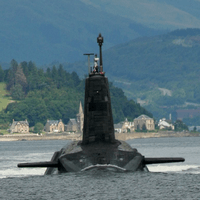The sinking of the South Korean corvette Cheonan by a North Korean submarine in March 2010 has already been recognized as a human tragedy and a significant escalation by Pyongyang in its multi-decade confrontation with Seoul. But in the years ahead, the Cheonan incident may come to be remembered more as the inaugural event in a new era of subsurface naval competition and confrontation in the Asia-Pacific region. Asia’s rising powers are investing in submarine capabilities at unprecedented levels, and the nature of this investment is fundamentally changing the region’s subsurface environment.
While this trend is certainly part of a broader regional investment in naval power writ large, the subsurface aspects of these investments are particularly significant, due to the unique attributes and capabilities of submarines. Whereas surface ships can be used both for traditional and nontraditional purposes -- such as peacekeeping, humanitarian assistance and counterpiracy operations -- the cost and attributes of submarines make them suited for missions of particular sensitivity: destroying the maritime power of another state, supporting special operations, laying sea mines and covertly collecting intelligence near an adversary’s waters.
Having evolved from a Cold War subsurface environment defined by American and Soviet nuclear submarines attempting to track one another as part of a multidecade game of nuclear cat-and-mouse, the subsurface environment emerging in the 21st century is becoming increasingly congested, conventional and contested. The implications of this new environment for America’s subsurface community are profound and should drive a re-evaluation of America’s subsurface strategy for the century ahead.

